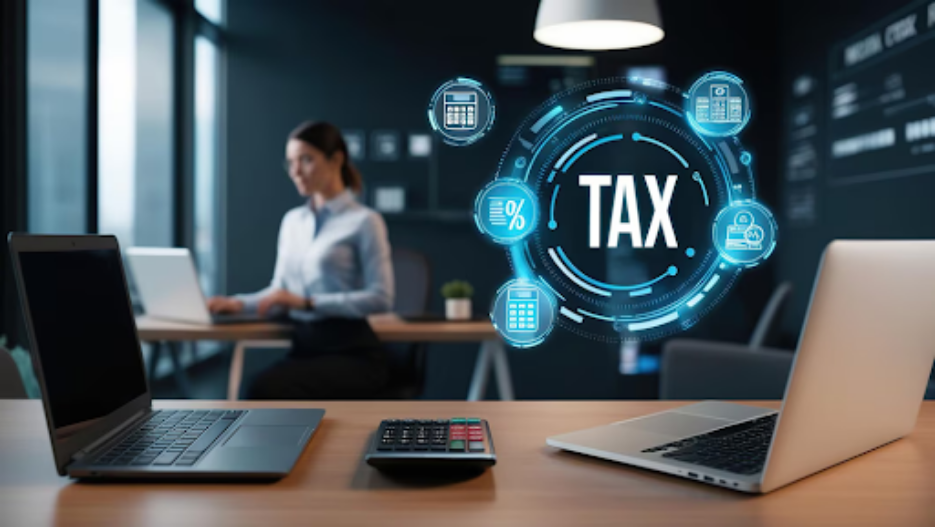Table Of Content:-
• Digital Transformation in Indirect Tax Administration
• Indirect Tax Technology: A Business Imperative
• The Challenges of Digital Transformation in Taxation
• How Technology Enhances Compliance and Efficiency
The administration of indirect taxes is entering a new era, driven by the rapid advancements in digital technology. What was once a paper-intensive and time-consuming process is now transformed into a streamlined, data-driven operation. Governments and businesses alike are embracing these innovations to not only meet compliance requirements but also to gain a competitive edge.
Here, we'll uncover how cutting-edge technology is reshaping indirect tax administration, explore the key trends, and discuss the implications for businesses and professionals, especially those preparing for the indirect tax CMA Inter exams. Understanding these changes is essential for staying ahead in a quickly evolving field beyond traditional methods.
Digital Transformation in Indirect Tax Administration
Digital transformation in indirect tax administration is changing how governments and businesses approach tax compliance. Traditional methods, often reliant on manual processes, are being replaced by automated systems that enhance accuracy, speed, and transparency. A key trend is the rise of cloud-based tax technology. These platforms allow businesses to handle their indirect tax responsibilities in real time, offering immediate access to data and minimizing the chance of errors.
For example, tax determination engines can automatically calculate the appropriate tax rate for a transaction based on its type and location, removing the need for manual calculations. Moreover, e-invoicing has revolutionized indirect tax administration. By digitizing invoices, companies can ensure that all transactions are recorded accurately and on time. This not only streamlines tax reporting but also helps maintain compliance with various regulations across different jurisdictions. For students preparing for indirect tax CMA Inter exams, grasping the significance of e-invoicing is essential, as it marks a major change in the management of indirect taxes worldwide.
Indirect Tax Technology: A Business Imperative
For corporate tax departments, the application of indirect tax technology is no longer optional—it's a necessity. As highlighted by Thomson Reuters, businesses are increasingly integrating indirect tax technology into their operations to manage complex tax requirements efficiently. This technology helps in automating tax compliance processes, reducing the risk of non-compliance, and enabling businesses to focus on strategic initiatives.
The use of data analytics is another critical aspect of indirect tax technology. By analyzing large volumes of transaction data, businesses can identify patterns, detect anomalies, and ensure that all tax obligations are met accurately. This level of insight is invaluable for companies operating in multiple jurisdictions, where tax laws can vary significantly.
Moreover, the integration of artificial intelligence (AI) and machine learning in indirect tax administration is transforming the way tax departments operate. AI-powered tools can predict potential tax risks, suggest optimal tax strategies, and even automate routine tasks such as data entry and reconciliation. For students preparing for indirect tax CMA Inter exams, understanding the impact of AI on tax administration can provide a competitive edge in their professional careers.
The Challenges of Digital Transformation in Taxation
While the benefits of technology in indirect tax administration are clear, the digital transformation journey is not without its challenges. One of the primary obstacles is the integration of new technologies with existing legacy systems. Many businesses still rely on outdated software and processes, making the transition to digital systems a complex and resource-intensive process.
Another challenge is data security and privacy. As tax administration becomes more digital, the amount of sensitive data being processed increases significantly. Ensuring that this data is protected from cyber threats and unauthorized access is paramount. Governments and businesses must invest in robust cybersecurity measures to safeguard their tax data.
Furthermore, the rapid pace of technological change can make it difficult for tax departments to keep up. Continuous updates to software, the introduction of new tools, and changes in tax regulations require businesses to be agile and adaptable.
This is particularly relevant for those studying indirect tax CMA Inter subjects, as staying updated with the latest technological trends is of utmost importance for success in the field.
How Technology Enhances Compliance and Efficiency
Technology plays a crucial role in enhancing compliance and efficiency in indirect tax administration. Automated systems reduce the burden of manual tasks, allowing tax professionals to focus on more strategic aspects of tax planning and management.
For instance, robotic process automation (RPA) can handle repetitive tasks such as data entry, invoice processing, and tax calculations. This not only speeds up the process but also reduces the likelihood of human error. The use of blockchain technology in tax administration is also gaining traction, offering a secure and transparent way to track transactions and ensure compliance.
Moreover, technology enables better collaboration and communication within tax departments. Cloud-based platforms allow tax professionals to work together in real time, regardless of their location. This is particularly beneficial for multinational companies with tax teams spread across different regions.
Harnessing Technology for Future Success
Technology's integration into indirect tax administration has a huge impact on the field. It makes things more accurate, productive, and compliant while giving key insights for smart choices. In today's digital world, using indirect tax tech isn't just a choice for companies—it's a must-have.
As tech keeps changing, it'll reshape how we handle indirect taxes in the future. For students preparing for professional exams like the indirect tax CMA Inter, keeping up with these technological advancements is essential for achieving success.
At Akash Agarwal Classes, we know technology plays a key role in modern tax administration. We aim to give our students the know-how and abilities they need to shine in the ever-changing world of indirect taxation. By using technology, we make sure our students are ready to handle the tricky parts of indirect tax administration and do well in their jobs.


